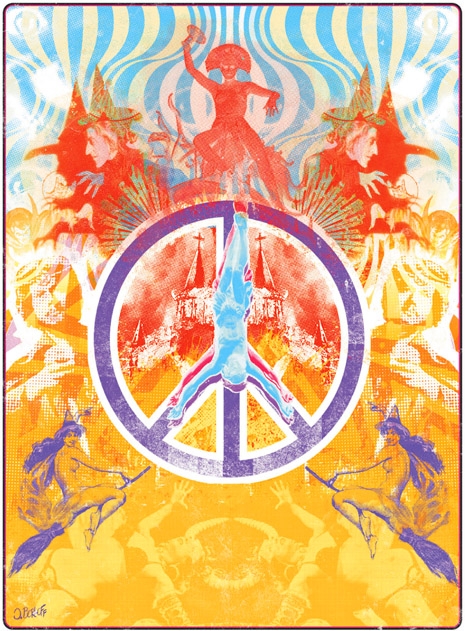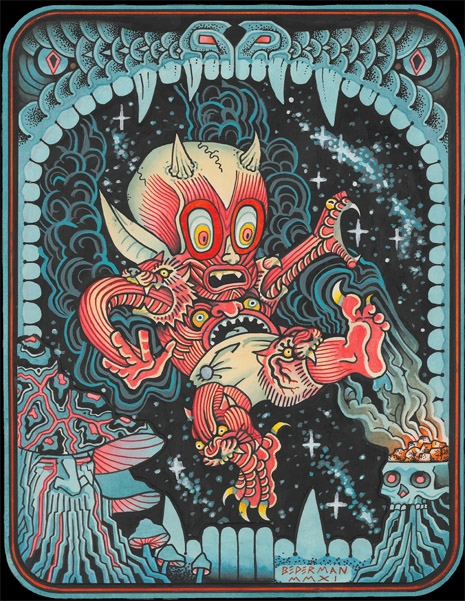
Bob Eggleton, “Hell-Kaiju”
Dangerous Minds has previously and previouslier told you about an ongoing series of Satanic art exhibits and books, all under the umbrella title “The Devil’s Reign.” The exhibits are put on and the books are published by Andy Howl, a tattoo artist with galleries in Fort Myers, FL, and they’re curated by no less an authority on LaVeyan Satanism than the Church of Satan’s High Priest, Peter H. Gilmore. Howl has told me that he intends the series to continue until it reaches ten exhibits and books—an ambitious goal, and the newest, Daikaiju, is the third, after “The Devil’s Reign” and “The Devils Reign II: Psychedelic Blasphemy.”
The valid question of what giant movie monsters have to do with Satanism inevitably arises, and naturally, the book addresses this matter, with essays by Gilmore and by Hugo Award winning fantasy illustrator Bob Eggleton (Greetings From Earth). Eggleton first:
Kaiju as a word actually means “mythical beast” in Japanese. The mystique of this kind of creature is the fact we don’t know from where it came, the forces that created it, or how, only that it exists. The Japanese have a long, rich history of creatures from the multi-headed Orochi to Yokai—ghosts which take on the form of strange, sometimes playful, sometimes terrifying creatures. All of them very colorful and bizarre, contrary to Western ideas of similar entities. Monsters of this size are not new, they permeate history of human kind. Even “Leviathan” from the Book of Revelations in the Bible is a giant, flame spewing monster, possibly part whale, and part deep sea life form. There has also been The Kraken, and The Mid-gard Serpent which Thor battled in Norse mythology, among many others. Kaiju have been with us from the very beginnings of human history, appearing even as cave paintings in the prehistoric record. In the early part of the 20th Century, writer H.P. Lovecraft concocted a plethora of weird and giant creatures. Foremost among them are Cthulhu, Dagon and his mythos of At The Mountains of Madness, and an abandoned prehistoric Antarctic city created by a race of aliens called “The Old Ones”. He had a gifted penchant for the appearance of demons and monsters to be, in fact, alien in origin from the dark places in the universe. Indeed, the Devils Reign.
And Gilmore:
Since the dawn of our species, humans have been awed by the power and mystery of the grand forces of nature under whose dominion we attempt to survive. Before science was able to explain the mechanisms behind storms, floods, volcanoes, tsunamis, hurricanes, and earthquakes, human beings personifed these vast and indifferent phenomena as best they could. The most mighty and terrifying aspects of the cosmos were deemed to arise from monstrous creatures. In Japanese, “daikaiju” specifically means giant monsters—ones with strange and fantastic characteristics—so the terrors of these ancient legends are embodied by this word.
Looking back through the myths of past cultures, we find the Babylonian Tiamat, a chaos dragon, who was transmuted into Leviathan in the Hebrew sacred texts. Behemoth, a vast elephantine monstrosity, and Ziz, a gigantic winged gryphon, were also mentioned in these scriptures, making a trio of biblical daikaiju. The northern peoples imagined Jormungandr as the world serpent, and the ancient Greeks were terrified by Typhon and Echidna, almost incomprehensibly gargantuan monstrosities who spawned a host of lesser hideous beasts. Fantastic giant monsters have thus been a primal aspect of the human imagination for millennia.
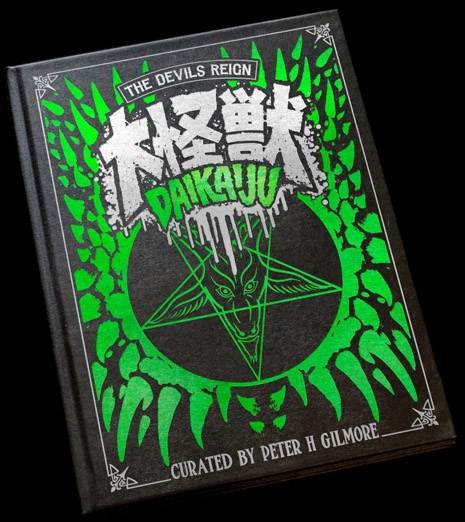
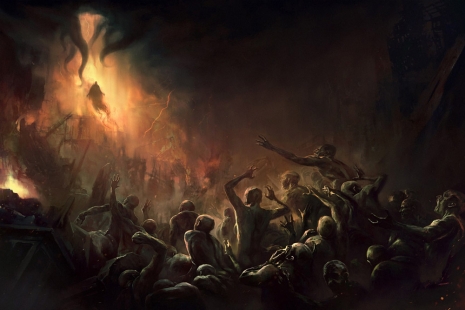
Richard “Tentacles and Teeth” Luong, “The Coming of Azathoth”
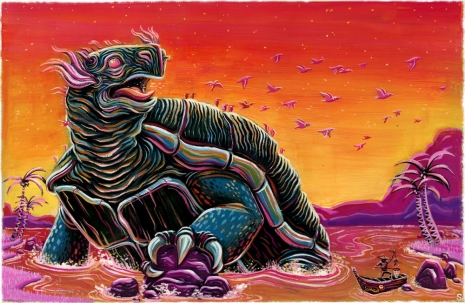
Peter Santa-Maria, “Giant Turtle”
More satanic mayhem after the jump…






